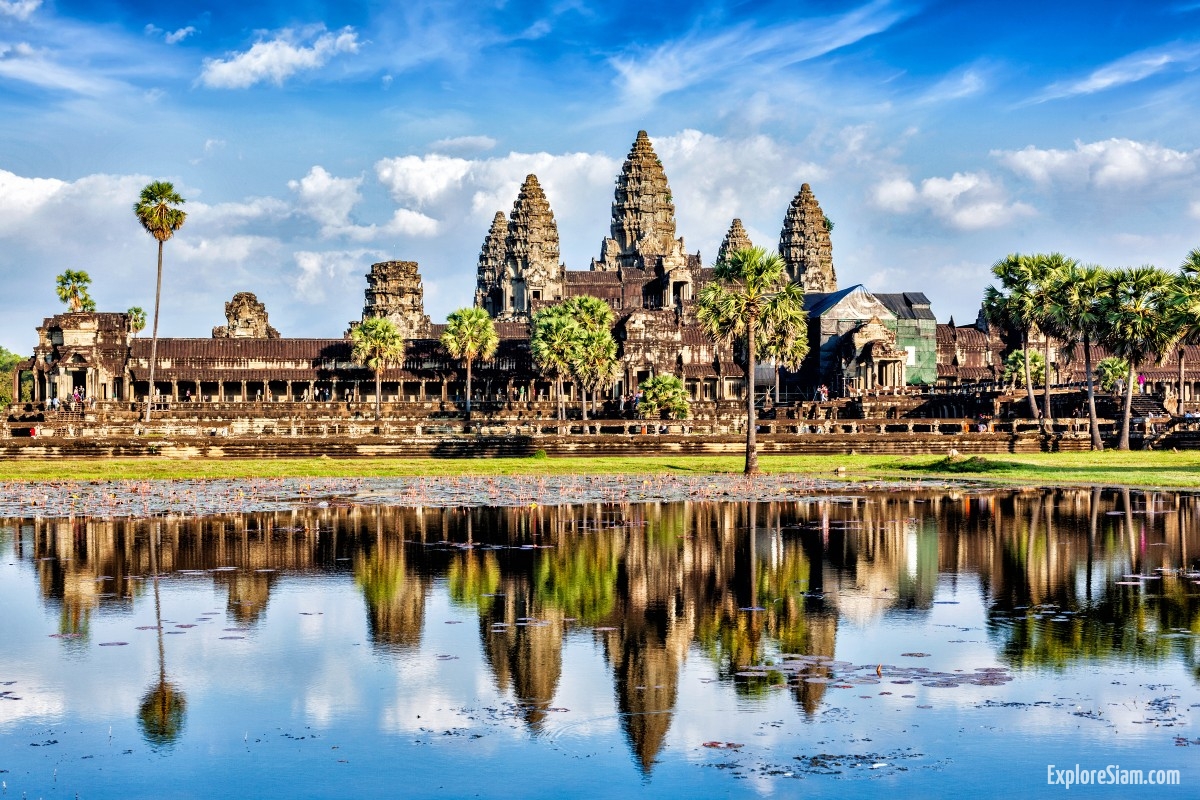Angkor Wat, located in the heart of Cambodia, stands as a testament to the grandeur and sophistication of the Khmer Empire. Constructed in the early 12th century by King Suryavarman II, this architectural marvel was initially dedicated to the Hindu god Vishnu before transforming into a Buddhist temple. Angkor Wat is not just an iconic symbol of Cambodia, but it is also one of the most significant archaeological sites in Southeast Asia. Its intricate design, grand scale, and historical significance make it a must-see destination for travelers and scholars alike.
The construction of Angkor Wat began in the early 12th century and took several decades to complete. King Suryavarman II commissioned this grand temple complex as his state temple and eventual mausoleum. Covering an area of over 162 hectares, Angkor Wat is considered the largest religious monument in the world. Its design reflects the high classical style of Khmer architecture, characterized by its elaborate bas-reliefs, intricate carvings, and towering spires.
One of the most striking features of Angkor Wat is its harmonious layout. The temple complex is designed to represent Mount Meru, the sacred mountain in Hindu and Buddhist cosmology. The central quincunx of towers symbolizes the five peaks of the mountain, while the surrounding moat and walls represent the ocean and mountain ranges, respectively. This cosmic symbolism is integral to understanding the spiritual significance of Angkor Wat.
The temple’s central structure is a three-tiered pyramid crowned by five lotus-like towers, rising 65 meters above the ground. Each level of the temple is intricately decorated with carvings and bas-reliefs that depict various scenes from Hindu mythology, including the Ramayana and Mahabharata epics. The galleries are adorned with over 1,200 square meters of narrative bas-reliefs, making them one of the most extensive in the world. These carvings are not only artistic masterpieces but also serve as historical records of the Khmer Empire’s culture, beliefs, and achievements.
One cannot discuss Angkor Wat without mentioning its remarkable engineering and construction techniques. The entire complex is built from sandstone blocks, which were transported from quarries located over 50 kilometers away. The precision with which these blocks were cut and assembled is astounding, considering the technological limitations of the time. The temple’s foundation is made of laterite, a type of clay that hardens when exposed to air, providing a solid base for the massive structure above. The extensive use of corbeling techniques, where stone blocks are stacked in a stepped manner to create arches and vaults, showcases the ingenuity of Khmer builders.
Angkor Wat’s orientation is another aspect that has fascinated historians and archaeologists. Unlike most temples of its time, Angkor Wat is oriented to the west rather than the east. This unique alignment has led to various interpretations, with some scholars suggesting that it was intended as a funerary temple for King Suryavarman II. The westward orientation is associated with Vishnu, the Hindu god of preservation, who is often linked with the setting sun and the end of the day, symbolizing the passage to the afterlife.
The transformation of Angkor Wat from a Hindu temple to a Buddhist site is a reflection of Cambodia’s religious evolution. In the late 13th century, Theravada Buddhism began to spread throughout the region, and Angkor Wat gradually became a place of Buddhist worship. This transition is evident in the numerous Buddhist statues and relics that have been added to the temple complex over the centuries. Despite this shift, the Hindu elements of Angkor Wat have been largely preserved, creating a unique blend of religious influences that can be seen today.
The significance of Angkor Wat extends beyond its architectural and historical value. It is a symbol of Cambodian national pride and identity. The temple is prominently featured on the national flag and is a source of inspiration for Cambodian art and culture. In 1992, Angkor Wat was designated a UNESCO World Heritage Site, recognizing its importance as a cultural and historical treasure. Efforts to preserve and restore the temple have been ongoing, ensuring that future generations can continue to marvel at its splendor.
Visiting Angkor Wat is an unforgettable experience. As the sun rises over the temple, casting a golden glow on its stone walls, one cannot help but feel a sense of awe and reverence. The intricate details of the carvings, the sheer scale of the complex, and the serene atmosphere create a profound connection to the past. Exploring the temple’s corridors and courtyards, visitors can imagine the grandeur of the Khmer Empire and the devotion of its people.
Angkor Wat is more than just a historical monument; it is a living testament to the ingenuity, creativity, and spirituality of the Khmer civilization. Its status as the crown jewel of Khmer architecture is well-deserved, reflecting the pinnacle of artistic and engineering achievement. As one of the most iconic and enduring symbols of Southeast Asia, Angkor Wat continues to captivate and inspire people from all over the world.





